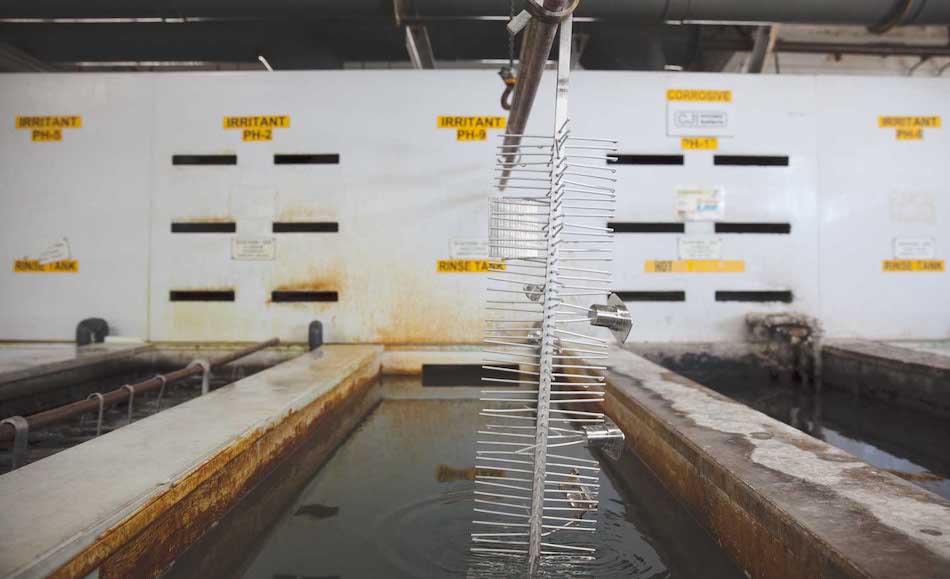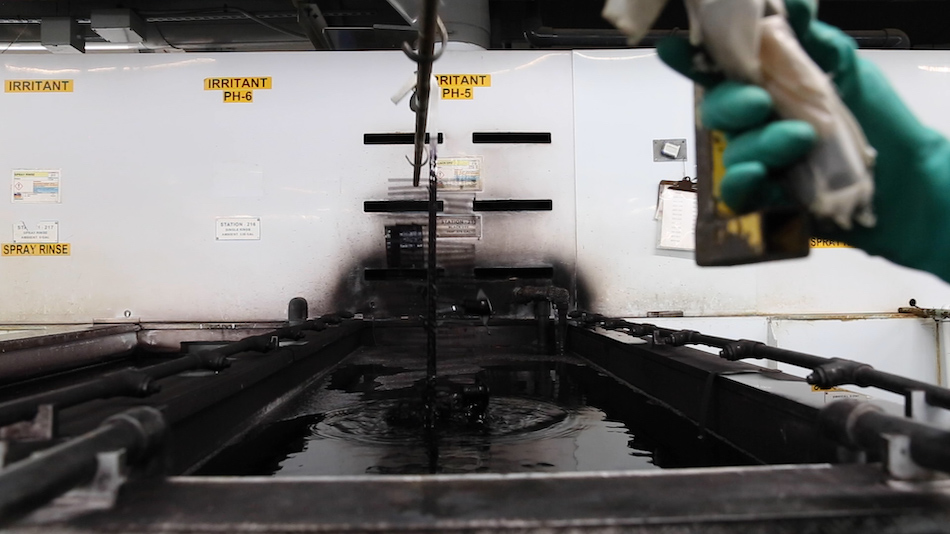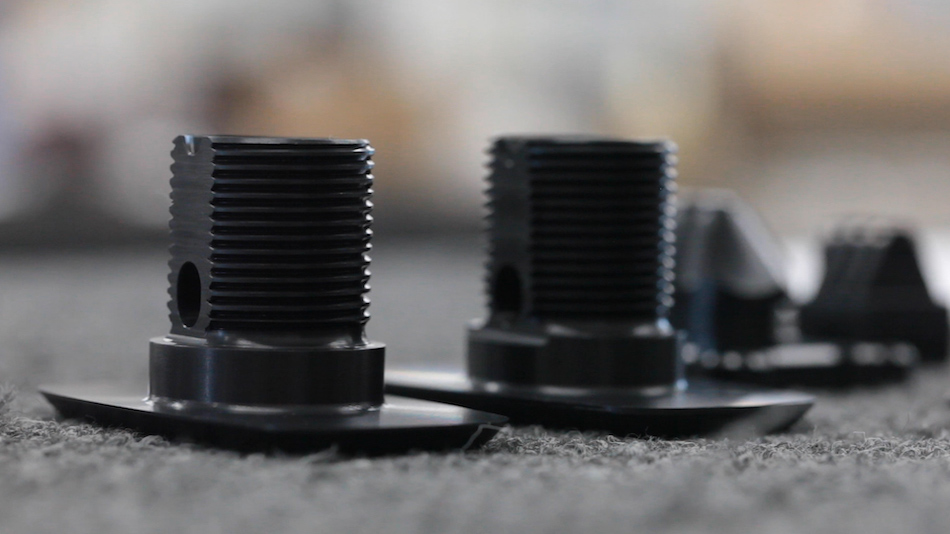Time to read: 2 min
Anodizing increases corrosion resistance and enhances your product’s aesthetic appearance. Watch our video to see the anodizing process in action!
Anodizing Materials
Aluminum is the most ideal material for anodizing.
The Anodizing Process
Anodizing is an electrolytic passivation process that grows the natural oxide layer on cnc machining aluminum parts to protect them from wear and corrosion and make them look attractive. Known as a conversion coating (like alodine), the anodizing process causes the surface of the aluminum to recede dimensionally, before the protective oxide layer is built up. When the anodizing process is complete, the oxide layer is chemically bonded to the aluminum substrate below, meaning it won’t chip or flake.
Rinse Cycle
The first step in the anodizing process is the rinse cycle, during which a cleaning solution removes debris to ensure uniform coating.

Sulfuric Acid Bath
Next, electricity is used to drive the reaction and develop the coating. The name anodizing comes from the fact that the treated part forms an anode (positive electrode) in an electrical circuit. During this process, the part to be anodized is hung on a conductive rack, submerged in an electrolytic solution, and a direct current of electricity is introduced. While the acidity of the solution dissolves the oxide layer of the part, the electric current releases oxygen at its surface, which builds up a protective layer of aluminum oxide. By balancing dissolve rate with build-up rate, the oxide layer forms with nanopores, which allows continued growth of the coating beyond what is naturally possible.
Dye Bath
After primary coating and before sealing, dye can be applied in a variety of colors. The most popular colors are clear and black, followed by grey, red, blue, and gold. China Manufacturing parts, Inc. offers approximate color matching at additional cost. Contact us for more information.

Sealant Bath
The final step of the anodizing process involves sealing the nanopores, so they can’t become passageways for corrosion initiation. Just before sealing, the nanopores are often filled with other corrosion inhibitors (or colored dyes, as mentioned above). After the process is complete, the coating will be 0.0002-0.0012” in thickness, in accordance with the common engineering spec MIL-A-8625 Type II.

See How It Works
Watch our latest video to see the anodizing process in action. Learn more about China Manufacturing parts’s anodizing capabilities on our anodizing capabilities page.

